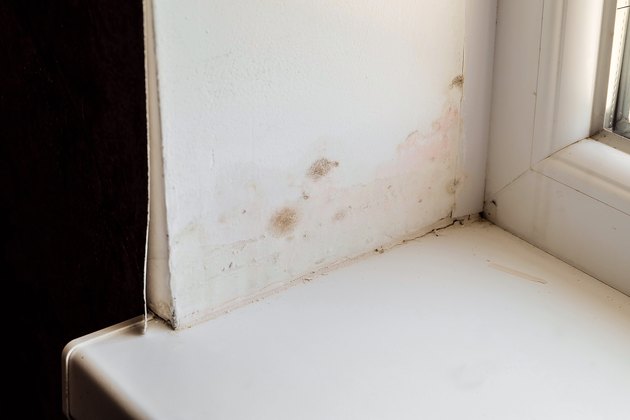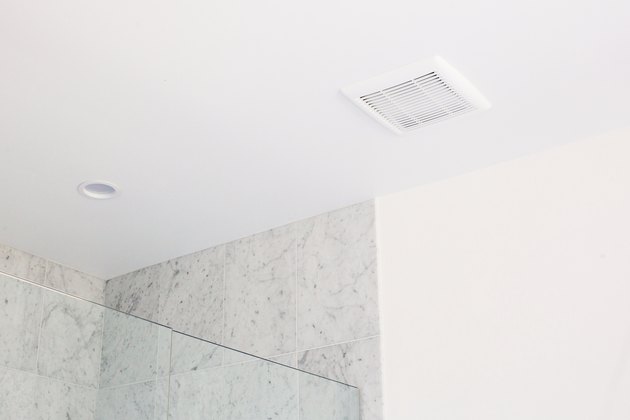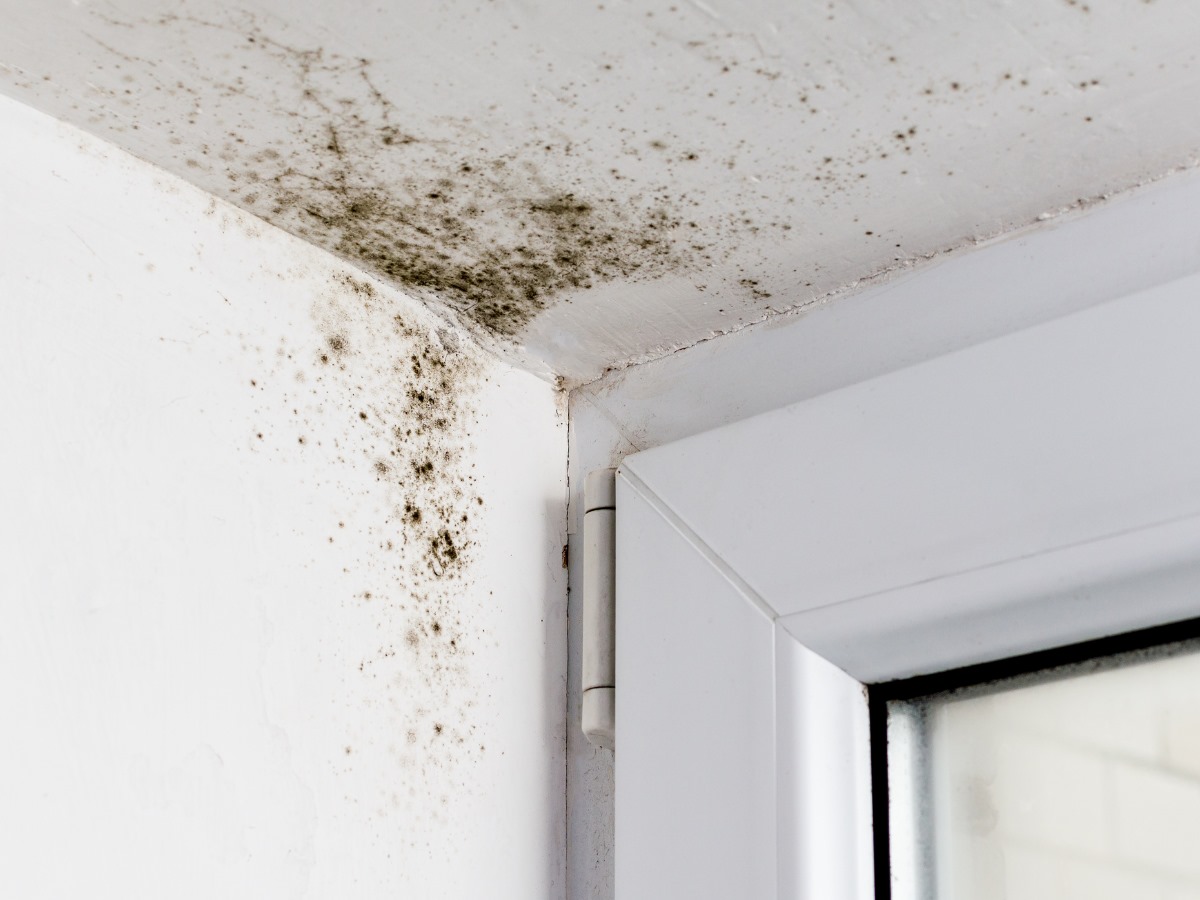Mold spores are already in your home. The truth is that mold spores are everywhere. Mold doesn’t have to be a big deal. Black mold isn’t the only kind of mold out there. There are many other types of mold that can cause health problems, especially for people who have already been sick with respiratory illnesses. You can clean most molds up without a lot of fuss.
How It Got In
Maybe you’re not Martha Stewart, but you keep your house clean, use your bathroom and kitchen exhaust fans, and clean with bleach from time to time. How can mold spores live in your house? They’re everywhere. Mold spores are everywhere, and there’s no way to avoid them.
A lot of things come in from the outside, and some of them get through the filters in your heater or air conditioner. On a warm summer day, some breezes pass through open doors and windows. The clothes, pets, and even the grocery bags that you carry are all places where people can come in. There will always be at least a few mold spores in your house, no matter how careful you are or how well you clean. They don’t need a lot of help to grow. It doesn’t take long for mold to get out of its container and move into almost any damp place.
Types of Mold
There are more than 100,000 different kinds of mold, but experts divide them into three groups: poisonous, pathogenic, and allergic. Those molds that make mycotoxins that can hurt even healthy people are the most dangerous. Stachybotrys, the infamous black mold, is in the category of things that can make you sick. There isn’t just black mold. Other molds that can be harmful to people are Acremoneum and Trichoderma, but only if the right conditions are met.
People who are healthy should not be afraid of pathogenic molds, because they aren’t likely to make them ill. They may, on the other hand, make or make worse any existing health problems (and at the very least contribute to poorer air quality). In some cases, if your immune system isn’t strong enough, these molds can be bad for your health. Aspergillus, Chaetomium, Ulocladium, and Penicillium are molds in this group.
Other molds become known as allergens. These molds may make asthma worse or cause an allergic reaction, but they don’t do any real harm. Mucormycetes, Alternaria, Aureobasidium pullulans, Cladosporium, and Fusarium are some of them.
Mold and Your Health
Everyone doesn’t get to live without mold, but it’s possible. Itchy eyes, wheezing, sneezing, itchy skin, and a runny nose are all symptoms of allergies to mold if you have mold allergies. Large amounts of mold can make you feel sick and short of breath. Some people have headaches.
It can be dangerous to have a lot of toxic molds. You might find that your sinuses and mucous membranes start to burn. As your body gets weaker, your chest may tighten. You may have a persistent cough, nosebleeds, or headaches that get worse, as well as fatigue. Children with neurological problems and babies with pulmonary bleeding have been linked to toxic mold exposure, but more research is needed to see if these claims are true or not,
To Test or Not To Test
So, you found mold, but you don’t know what kind it is. Should you? Honestly, the answer is “no.” When you see mold, you need to remove and clean it up right away.
Because mold removal is the same for all molds, you don’t need to know what kind of mold it is. Remove it by following the instructions and safety rules. If for some reason you want to have your mold checked, it’s best to avoid the home test kits and call in a professional who can get a sample and look at the mold for you.
You don’t need to test all kinds of mold, but there are times when you should check for mold. Tests are good if you think there is mold in your home that you can’t see or smell. You may also want to check for mold after you clean to make sure you did everything. A mold test is also a good idea before you buy a house or when you think there is a mold problem but your landlord doesn’t agree.
Signs of Mold Growth
If you see mold, you have mold. Even though mold can be hard to see at first, it can grow behind your wallpaper or inside your walls. In this case, you might smell mold. If you know that there has been water damage or a water leak, you should also look for mold.
Follow your nose to find out where mold is coming from. On walls behind furniture and near leaky plumbing pipes, mold grows when there is a lot of water in the air. Check around your windows for moisture and mold, and look at the bottom of your carpet. Another place to look for mold is in book and newspaper piles.

Remove Mold Growth and Damage
Getting rid of mold before you do anything else is very important. You need to find and fix the source of moisture that is feeding the mold. A slow plumbing leak will cause mold if it isn’t fixed, so make sure to fix the leak first. When trying to get rid of mold, it is important to dress for the best. It’s important to protect yourself from mold spores so you don’t get sick.
Start by getting rid of things you can’t clean. It’s often hard to clean moldy carpet, upholstery, and drywall because they’re too porous. They need to be changed out. Clean the things you can clean with a stiff-bristle scrub brush and a small amount of soap (not ammonia). To make bleach solution if you don’t want to use water, you can mix 1 cup of bleach with a gallon of water.
Do this again with water after you’ve cleaned it. When you clean, run a fan or dehumidifier, and open the doors and windows so that the surfaces you clean can dry more quickly after you clean them. Carpet, furniture, and other things should only be brought back into the area when it’s completely dry.
Saving Sentimental Items
When there is mold growth, some things can’t be saved. As a result, sometimes the items we find mold on are very expensive or have a lot of personal value that makes them impossible to get a new one of. It’s possible to try and save some things in this case. Sometimes, it’s worth giving it a try.
Mold stains can stay on clothes and fabrics for a long time. To try and save them, treat the stain with an ammonia-free treatment or use an ammonia-free laundry detergent to clean it. Let the stain sit in the detergent for a while, then wash the item in the hottest water it can handle. Bleach can be added to a white load. Oxygen-based bleach can be used for colored loads.
If you want to save leather, use a soft-bristled brush to get rid of the mold. After you’ve brushed the leather, use a phosphate-free detergent mixed with water to wipe it down with a sponge or a cloth. Rinse the detergent away with a damp cloth. Then, go over the stain again with a 50/50 mixture of isopropyl alcohol and water to get rid of the spot again. Dry the leather well, then treat it.
Make sure you can get as much moisture out of the carpet as you can with your wet/dry vac if you have a favorite rug. Spot treat with a sponge if there is only a small amount of mold. Make sure you test hydrogen peroxide on a small area first. You can use hydrogen peroxide to get rid of stubborn mold stains. You can use a fan to help dry the carpet thoroughly, or you can hang it outside on a wash line.
If you find mold on family photos and other important things, you might want to call a restoration company. These people can sometimes save things that you can’t. Make sure you get help as soon as possible and follow any instructions the restoration company gives you.
When to Call a Pro
Make sure you wear your safety gear when you clean mold. There are times, though, when it’s better to hire a remediation service to clean up the mess for you. If you’re sensitive or allergic to mold, one reason to do so is to clean your home. A professional is also a good idea if you need to clean an area bigger than about 10 square feet.
Also, if there’s a chance that mold got into your HVAC system or if the water that caused the mold had any sewage in it. If your mold is in a crawl space or other hard-to-reach place, you may also want to call in someone.
Call a professional mold removal service if you need to get rid of mold. Before you hire him, check him out. Reputable remediators will be happy to show proof of insurance and give you a list of satisfied customers. In Florida, Louisiana, Maryland, Mississippi, Tennessee, and Texas, people who want to clean up mold have to get a license. As a general contractor, someone who cleans up mold in other states usually has a license.

Preventing Mold Growth
The best way to deal with mold is to keep it out of your home. Check to see if your bathroom and kitchen fans work properly and make sure you use them. Place a dehumidifier in areas of your home that are humid or wet, and try to keep the relative humidity in your home between 30% and 50%.
Make sure your basement is waterproof before you finish it. Even so, choose area rugs instead of carpet for the whole house. Leaky pipes and fixtures should be fixed right away, even if the leak is only a little bit. Make sure you don’t store things that aren’t very durable, like books, old newspapers, and scraps of drywall. These materials are great places for mold spores to gather and grow because they are very absorbent.
You should keep an eye on things like air conditioners and dehumidifiers. As clogged pipes and dirty filters can cause more problems than they solve, you don’t want these units to drain water the right way. If there is water in your home, quickly clean it up. If you dry things out quickly, you can often avoid mold.
It’s important to keep your lawn sloped away from the house and to make sure that all of your guttering and drainage systems are clear. As a result, water can flow back toward your home instead of away from it, which may lead to mold in the basement. Overflowing gutters and improper slopes can make this happen.
There Might Be Help
You may need to spend a lot of money removing mold and replacing things that can’t be saved, depending on how big and bad your mold problem is. Sometimes, your homeowners’ insurance may be able to help out. In other words, before you get too excited, be aware that many insurance policies don’t cover mold damage at all.
But there are times when an accident that is covered by your insurance makes mold. Mold caused by water the fire department used to put out a fire or mold caused by a burst water heater might be covered. There is a chance that if your homeowner’s insurance paid for something that led to mold, it might also pay for the mold. If you have even a small amount of insurance, it can help to take the bite out of the costs for mold removal.













